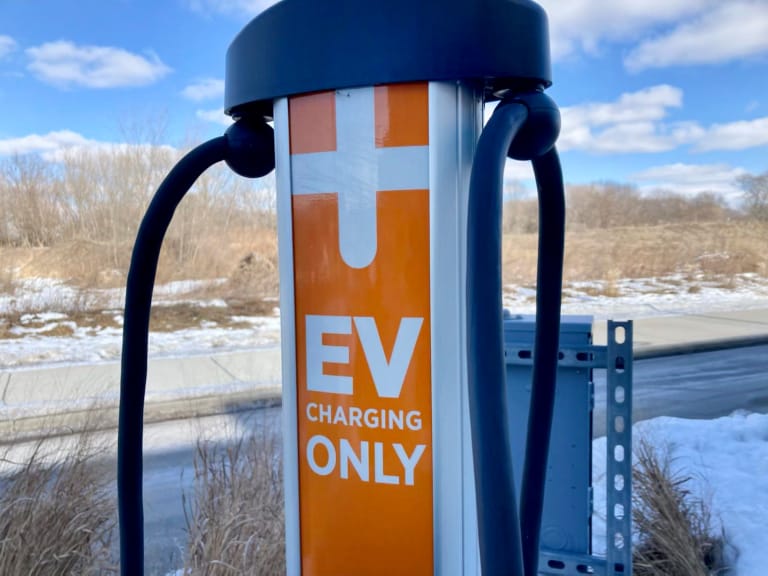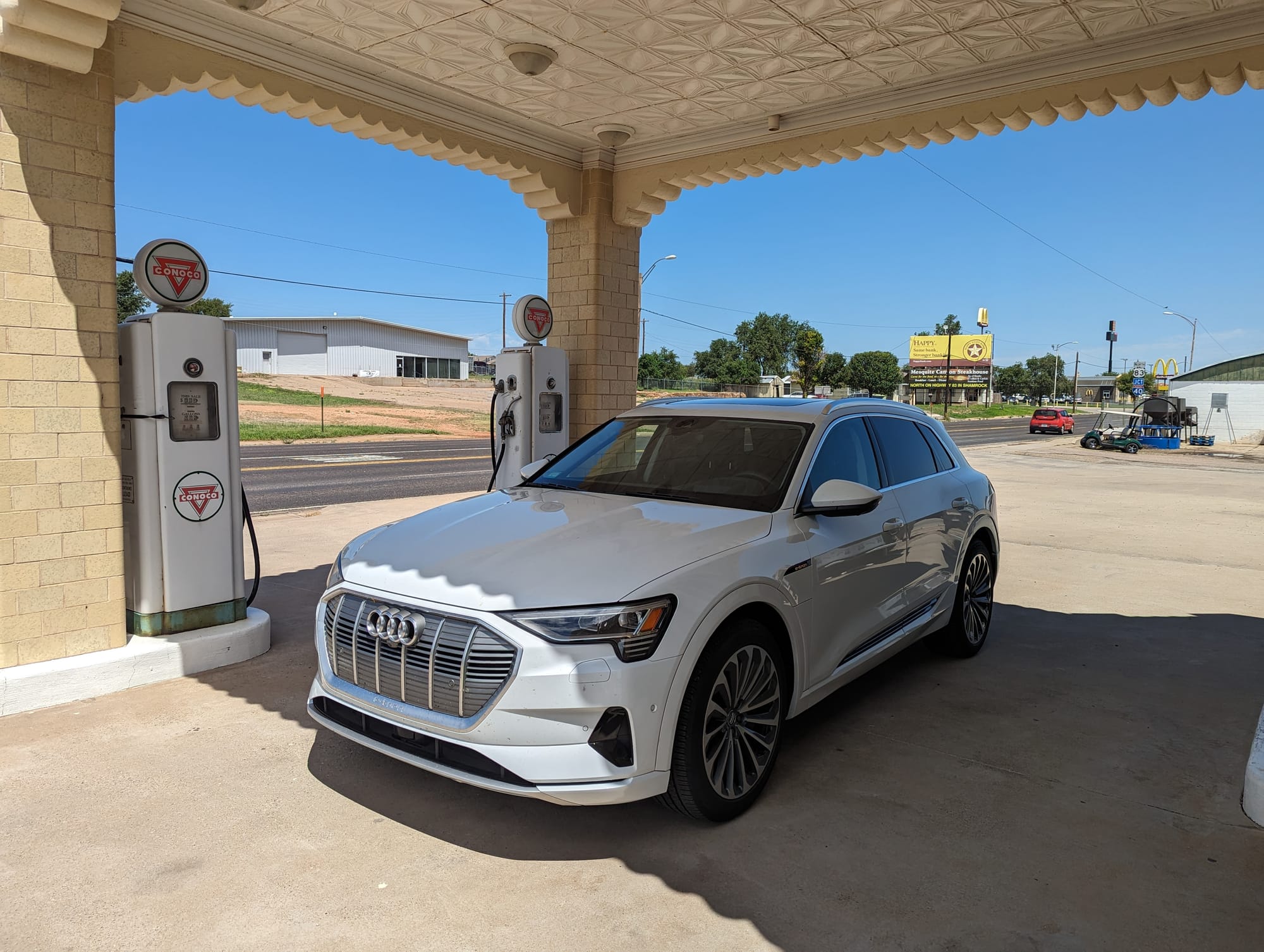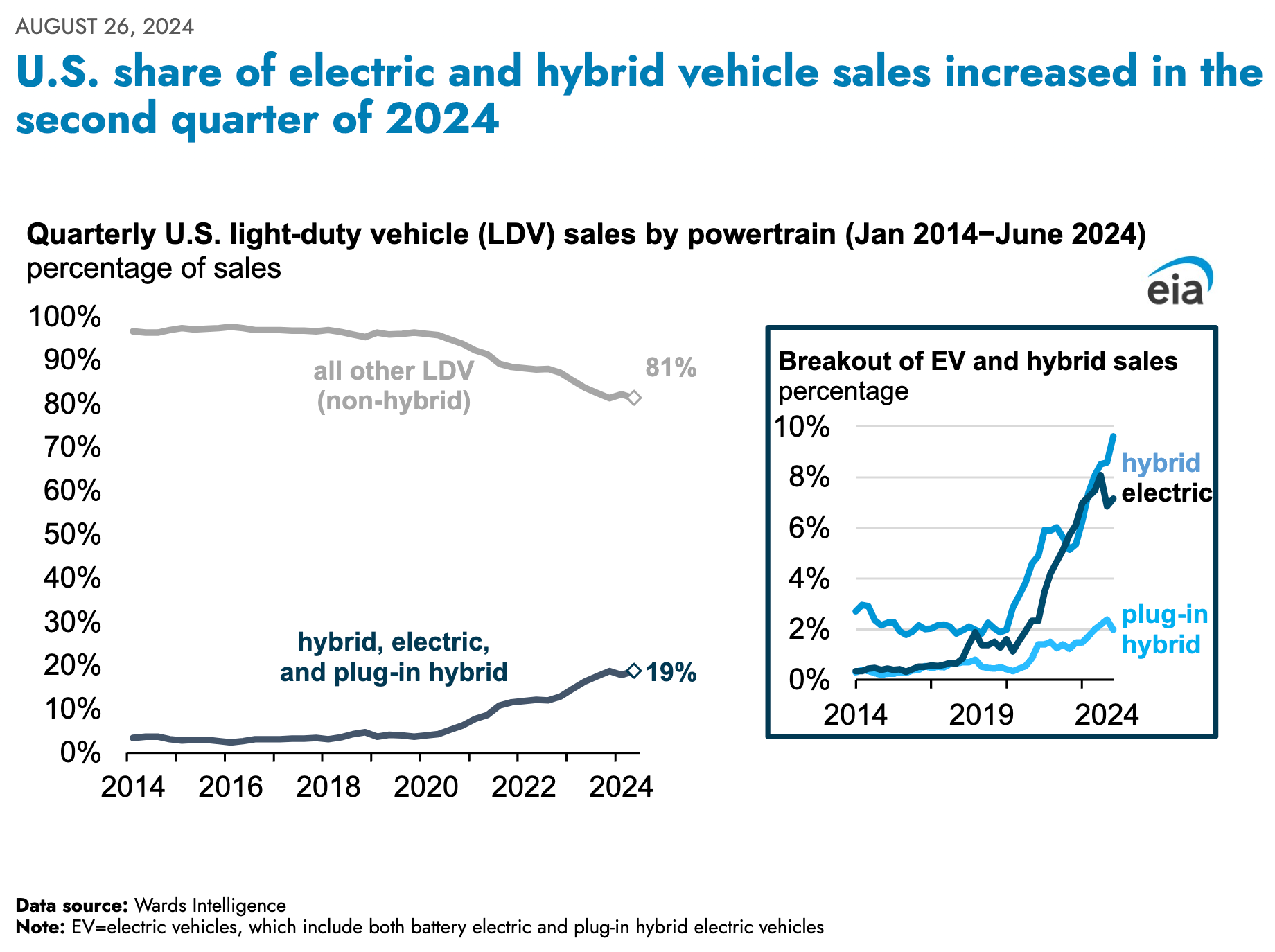EV myths: Are they keeping people from getting rid of their gas guzzlers?
Advocates say oil and gas interests are fearmongering to keep people from transitioning to electric-powered vehicles

Published by the Louisiana Illuminator, Washington State Standard
Thomas Wischgoll, a computer science professor at Wright State University in Ohio, wanted to see for himself whether there was any truth in there not being enough charging infrastructure to make long road trips in an electric vehicle.
This summer, he and his wife Rosa packed up their 2019 Audi E-tron and drove from Dayton to San Diego, visiting friends and family along the way in St. Louis, Albuquerque and Las Vegas.
Wischgoll wrote a blog about the 6,000-plus-mile journey for Drive Electric Dayton, a local EV advocacy group.
There were some drawbacks — like having to switch chargers a few times to get better charging speeds and not quite enough charging stations for his liking. But Wischgoll said there were noticeable improvements in the amount of charging options they had compared to when they took a similar road trip the year before.
Wischgoll said they saved lots of money on the first road trip, spending only about $60 for charging thanks to credits from Audi. The year’s road trip he said only a few hotels and one station offered free charging.
In the end, they paid $960 for the 6,666-mile trek — about the same as a similar gas-powered car that gets 24 miles per gallon at $3.50 a gallon.
“You have to pre-plan, that’s the key element,” he said. “If you do that, it wasn't really a big deal at all. I mean, for the most part, we plugged it in and went to the bathroom, and shortly after that, it was done.”
Electric vehicle sales in the United States have been on an upward trend, partially due to the generous tax breaks and federal incentives President Joe Biden’s administration has implemented to reduce U.S. greenhouse gas emissions.
And the top source of those emissions is transportation.

But advocates say there is still apprehension among consumers to ditch their gas guzzlers, which they blame in part on disinformation and anti-EV myths pushed by the oil and gas industry.
Among the false narratives: The federal government is banning gas-powered cars. In truth, the Biden administration wants at least half of the new vehicles produced annually to be electrically-powered by 2030. That means a sizable number of cars and trucks would still run on gasoline or diesel.
Yet during an Aug. 8 press conference, former GOP President Donald Trump falsely stated that if his Democratic rival, Vice President Kamala Harris, becomes president, everyone in the country will be forced to buy EVs.
“There is a lot of misinformation, and I’d go so far to say disinformation, out there about EVs,” said Aaron Viles, the director of campaigns for Electrification Coalition, a nonprofit pro-EV lobbying organization. “It’s being amplified by folks who are just opposed to moving our transportation sector off of oil, breaking oil and gas’ monopoly on transportation, which is really what EVs represent.”
The American Fuel and Petrochemical Manufacturers, the trade association representing hundreds of fuel refining and petrochemical companies, last month released two 30-second video ads urging people to call the White House and demand that Biden not take away their fossil fuel-powered cars.
The first ad, “All of Us,” highlights some of the prevailing apprehensions about EVs, such as a lack of chargers for drivers in rural communities or while on long road trips. It also posits that electric-powered cars are too expensive for most Americans.
The second ad, “Open Roads,” characterizes driving fuel-powered cars on open highways as “something American,” followed by a series of shots of gas vehicles vanishing into thin air as they cruise down the highway.
“Even when we’re coming to folks who have an interest (in EVs), that misinformation permeates,” Viles said. “And so we have to, you know, do it one-on-one with conversations and let people know the truth.”
The criticisms about EVs are not without some merit. There still isn’t enough charging infrastructure, especially in states that have been slow to adopt the EV mindset. The auto industry is still grappling with how to make EV’s more efficient by lowering the amount of kilowatt hours of electricity some models consume. And on average, EVs still cost about $2,800 more than new gas-powered vehicles.
But generally, the cost to maintain and fuel an EV remains lower — in some cases significantly so — than a gas-powered car.
Money lines up for and against EVs
A recent report by Open Secrets found that EV manufacturers and traditional automakers invested approximately $44.8 million in federal lobbying efforts in the first part of this year. The oil and gas industry spent $72 million during the same time period — largely in response to the Biden administration’s push toward EVs.
The fuel and petrochemicals group has spent the most money, $8.1 million, to block the expansion of EV adoption and the new vehicle emissions standards proposed by the U.S. Environmental Protection Agency, the report states.

Auto manufacturers and labor unions were relieved when the Biden administration instead implemented standards that would slow the implementation from 2027 through 2029 but then ramp up from 2030 to 2032. The standards would avoid “7.2 billion tons of CO2 emissions through 2055, roughly equal to four times the emissions of the entire transportation sector in 2021,” according to the administration.
Biden also employed a new measurement based on greenhouse gas emissions that gives automakers flexibility to pursue various ways to reach the targets.
Ingrid Malmgren, senior policy director for EV advocacy nonprofit group Plug in America, says the opposition is leveraging consumers’ fears around electric vehicles to create a political divide — with conservatives rebelling against a transition while liberals are more willing to embrace it. The standards have been the target of several lawsuits seeking to overturn them, including from Republican attorneys general.
“Fear is a powerful motivator; whether it's fear of running out of a charge, fear of a fire, or just fear of the unknown,” Malmgren said. “The bottom line: Change is scary right now. We're all used to certain things. It might not even be good, like gas cars.”

Misinformation widespread here, abroad
Recent polling by The Energy and Climate Intelligence Unit, a United Kingdom-based nonprofit, also pegs resistance by many people across the pond to transitioning to electric vehicles to myths and misinformation.
The poll surveyed 1,000 non-EV drivers and 1,000 people who owned EVs in the UK.
Participants were asked 10 true/false statements about EVs, with 90% of non-EV owners answering five or less accurately. Around 23% of those non-EV owners answered none correctly.
The poll found nearly 62% of “petrol” drivers falsely believed EVs are more expensive to own and maintain, while 41% incorrectly thought EVs are more likely to catch fire. And 80% of those non-EV owners were convinced there isn't enough charging infrastructure in the UK — despite the country being ahead of its goal to install 300,000 chargers by 2030.
“This poll reveals the extent to which many of the UK’s drivers have developed negative views about EVs that have no basis in reality,” James Court, chief executive officer of the Electrical Vehicle Association in England, said in a prepared statement.
“We want to see industry and government think seriously about what they can do to tackle this misinformation. Because we know that, once people have access to accurate information, many will choose to make the move to electric driving and won’t look back.”
Advocates in the United States shared similar sentiments, adding that the politicization of EVs has become another challenge to getting people to make the transition.

Media Matters for America, a nonprofit media misinformation watchdog group, bullet-pointed counterarguments to misleading comments and characterizations right-wing news outlets and Trump have made about Biden’s push toward electrification and reducing greenhouse gas emissions.
Among the points made by MMA is that EPA’s new tailpipe emissions standards for automakers don’t prevent the auto industry from making vehicles with higher emissions as long as they produce enough vehicles with lower to zero emissions to meet the annual average.
US sees increase in EV sales
Despite the misinformation, EV sales here increased slightly in the second quarter of this year after experiencing a slight decline in the beginning of 2024, according to data released in August by the U.S. Energy Information Administration.
Combined sales of hybrid, plug-in hybrid and battery electric vehicles increased from 17.8% of sales in the first quarter to 18.7% in the second quarter of 2024. And the average price of battery-operated EVs in the country dropped by $1,034 between January and June — not including any government incentives.
The U.S. Treasury Department and Internal Revenue Service in June reported issuing more than $1 billion in upfront tax credits to people who purchased electric vehicles as of Jan. 1. Biden’s 2022 Inflation Reduction Act allows car dealers to offer cash incentives of $7,500 for new EVs and $4,000 for a used EV. The credit comes at the point of sale instead of when buyers file their annual income tax returns.

Feds boost charging infrastructure
Biden’s 2021 Bipartisan Infrastructure Law also earmarked $7.5 billion toward the buildout of a network of 500,000 EV chargers along highways and in local communities across the country. And it allocated more than $3 billion toward the manufacturing of EV batteries and materials.

According to the U.S. Department of Energy, as of Oct. 16, there were 72,642 charging stations in the country and 210,721 charging ports. In August, the Biden administration announced $521 million in grants to continue the buildout of the EV charging infrastructure.
That’s good news to Wischgoll, who found gaps in the charging infrastructure during his cross-country road trip, with some states obviously further along than others.
“When we went through the northern states, Montana and Wyoming, there was really only the one charger. And if that didn't work out, we would have been stuck, basically.”
Added Wischgoll: “I think people would be more comfortable if there were more and more chargers. And we’re getting there.”
Floodlight is a nonprofit newsroom that investigates the powerful interests stalling climate action.


